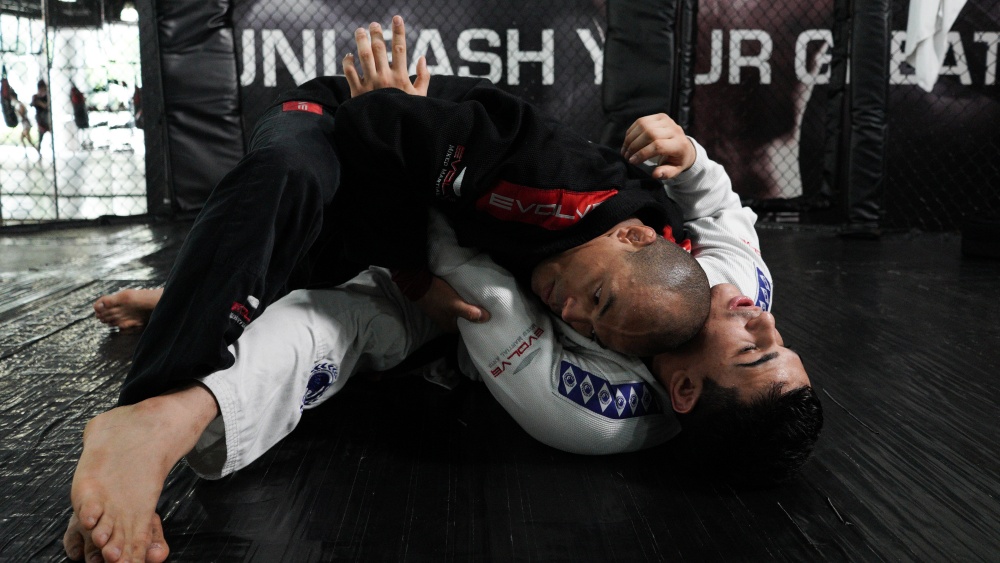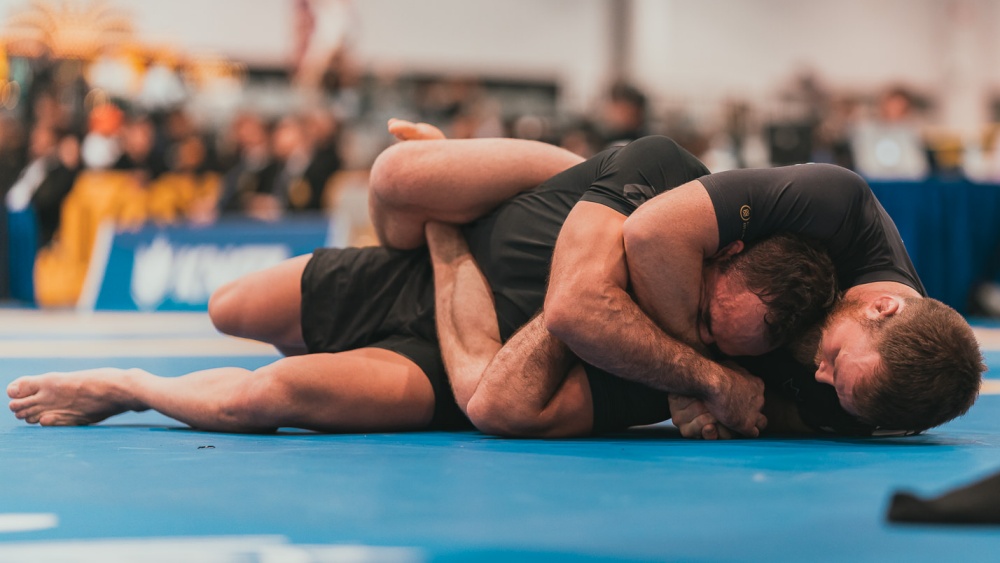The art of guard passing is one of the most important aspects of Brazilian Jiu-Jitsu. To define, guard passing is where you pass the opponent’s defense (guard) using technique, movement, and leverage. The central theme of passing the guard is to bypass the opponent’s legs. One can do this by going around, under, and through the legs.
Guard play is a phase in grappling where the passer and defender battle for the slightest advantage to improve position. The guard player uses their legs and body position to stifle a passer’s attempt to pin.
On the other hand, the guard passer attempts to crack the guard open and advance position. Today we’ll talk about the smash pass, one of the most effective techniques you can do to pass the guard.
Benefits Of Systematizing Your Guard Passes
Guard passing, in theory, is simple. All you have to do is find a way to pass the opponent’s legs. But the actual techniques that encompass guard passing are very vast. Brazilian Jiu-Jitsu is a fast-evolving martial art, and many practitioners have contributed to the passing game.
You can pass using either speed or pressure. Speed-based passes require not only explosive movement but also good coordination, timing, and deception to properly pull off. Athletes in the lighter weight classes prefer to use this passing style, although some also use pressure to pass the guard.
Pressure passing is where you drive your weight directly towards the opponent. While anyone can use pressure passing as their primary technique, stronger and heavier grapplers can definitely use their attributes to make their guard passes a nightmare to defend against.
Regardless of what you prefer to use, it is best to create a system where you can chain passing techniques in succession. Doing so makes your movement more dynamic, which improves your chances of passing the guard.
Smash Pass Defined
Now let’s discuss the smash pass. The smash pass is a technique where you force your opponent’s legs to stack on top of the other as they lay on their side. Smashing their legs in this configuration makes their guard incredibly weak. It also forces them to rely on their arms as a last means of defense.
In this video, ADCC bronze medalist Lachlan Giles demonstrates two ways to pass the guard using the smash pass. The first technique is the smash pass from the seated guard to side control. Lachlan mentions that it is easier to redirect a person’s position when almost tilted over. Use your head to push the body backward and pin the legs with your weight.
The key detail here is not to rely too much on your arms to push the legs to the side. You can position your body at an angle where your chest can block the leg. Once you are at the side of your opponent’s leg, smashing the legs becomes very easy.
Once you smash the legs, it is now time to pass the guard. Note that your weight should be on the opponent’s legs as you work on the pass. If you place your weight on their hip, they can always threaten to push you away or use their hooks to sweep you over. Your legs should also cover your opponent’s to keep you stable on top. From this position, grab the opponent’s far elbow, jam your head next to their shoulder, and use the windshield wiper motion to clear your far leg and complete the pass.
The second option is the smash pass straight to mount. Starting from the smash pass, use your near side leg to block near the opponent’s knee. Once you block the knee, switch your head position from near the opponent’s chest to facing the opponent’s back. The movement of the leg and head prepares your body to move to the other side. Switch your hips and scoop the opponent’s legs using your far leg and lock the triangle. Square up, get the underhook, and go to mount.
This option is admittedly more nuanced than the first one, but the threat of going straight to the top makes it a highly valuable technique for those who love the full mount. The use of the leg triangle is similar to how Khabib Nurmagomedov likes to pass the guard as well.
Going back to what we mentioned about working on systems, these two techniques are guaranteed to work if you use them in combination. Once you get the smash position, it will be just a matter of time before you get to pass the guard.
Remember to always stay tight and keep the opponent’s elbow trapped as you move up. Use the concept of dilemmas to force your opponent to choose between two bad options. If he blocks the pass to side control, transition to the mount and vice versa. Also, keep an eye out for the underhook once you smash the leg. You may not always get to these two passing options, but you can always use the underhook to improve your position as you pass the guard.
If the smash pass is new to you, it is best to drill the technique as consistently as you can. Start by working on the primary smash entry and familiarize yourself with the two techniques we saw in the video.
It is recommended that you drill with zero resistance in the beginning and slowly add common defenses as you improve. Talk to your instructor and express your interest in the technique. It is always a good idea to seek the assistance of an expert in learning new techniques. Drill the smash pass for weeks, and you’ll get the hang of it in no time.
Conclusion
The smash pass is just one of the many passing techniques available in BJJ. This technique has been used by countless grapplers over the years, and it has been tested in many world-class matches. Try the smash pass today and see if it complements your game.
We hope that you enjoyed this article. Stay safe and happy rolling!
You may also like:

















